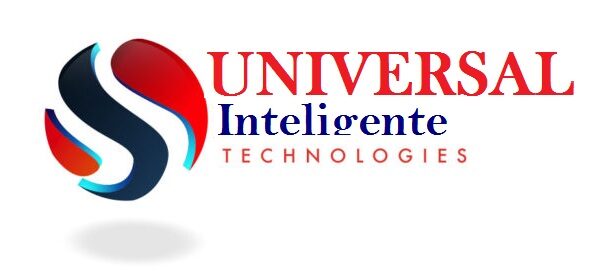Scaling a B2B SaaS business requires moving beyond inconsistent lead efforts to building a predictable, repeatable, and automated pipeline. This is the shift from hoping for leads to engineering revenue growth. This definitive guide breaks down the framework for systematic B2B SaaS lead generation, ensuring quality, efficiency, and scale.
Phase I: The Strategic Foundation (Quality Over Quantity)
Before investing heavily in channels, you must solidify the core targeting and qualification mechanisms. Scaling a flawed foundation only accelerates failure.
1. Define Your Ideal Customer Profile (ICP) and Buyer Persona
Scaling starts by narrowing your focus. Your ICP is the profile of the company that gets the most value from your software and has the highest Lifetime Value (LTV).
- Firmographics: Industry, company size (revenue/employee count), geography, and budget.
- Technographics: The existing software/tech stack they use (e.g., must use Salesforce, must not use HubSpot). This is a powerful signal for integration opportunities.
Your Buyer Persona is the individual within that company who researches, champions, and signs the contract. Understand their:
- Pain Points: What KPIs are they measured on that your product directly impacts?
- Buying Triggers: External events that signal readiness to buy (e.g., recent funding, surge in hiring, M&A activity, switching from a competitor).
2. Establish a Dynamic Lead Scoring Model
A scalable pipeline requires a systematic way to prioritize leads. Implement a lead scoring model that combines demographic (ICP fit) and behavioral (engagement) data.
| Activity | Lead Score Value | Lead Stage | Action |
| Job Title (e.g., VP of Marketing) | +15 | Lead (LQL) | Marketing Nurture |
| Views Pricing Page | +10 | Marketing Qualified Lead (MQL) | Targeted Nurturing/Chatbot Follow-up |
| Signs Up for Free Trial/Freemium | +25 | Product Qualified Lead (PQL) | Priority Sales/CS Handoff |
| Downloads Competitor Comparison | +5 | MQL | Segmented Email (Case Study) |
| Total Score $\ge 40$ | Sales Qualified Lead (SQL) | Immediate SDR Outreach |
Phase II: The Multi-Channel Engine (Repeatable Volume)
A resilient, scalable pipeline relies on a balanced mix of demand capture (short-term) and demand creation (long-term).
3. Content and SEO: The Long-Term Asset (Inbound)
SEO is the most cost-effective channel for SaaS lead generation high-intent leads at scale.
- Demand Capture Content: Target buyers actively searching for a solution. Focus on comparison keywords (“[Your Competitor] vs. [Your Product]”), best-of lists (“Best CRM for Agencies”), and long-tail problem keywords (“how to reduce database latency”).
- Demand Creation Content (Thought Leadership): Target awareness-stage leads. Create original research, benchmark reports, and expert guides that establish your brand as an authority, attracting people who don’t yet know they have a problem.
- Leverage Review Sites: Maintain an optimized presence on G2, Capterra, and TrustRadius. These are critical mid-funnel conversion points where buyers compare options right before a decision.
4. Targeted Outbound: Precision and Personalization
Cold outreach should focus on quality accounts defined by your ICP and not be a mass-blast activity.
- Multi-Channel Sequence: Use a 7-10 touchpoint cadence that blends channels: LinkedIn connection/InMail $\rightarrow$ AI-personalized cold email $\rightarrow$ Value-add content/case study $\rightarrow$ Cold call.
- Trigger-Based Outreach: Only initiate outbound when a buying signal is detected (e.g., the target company announces new funding, posts a job for a role that uses your product, or is mentioned in a relevant news article).
5. Product-Led Growth (PLG): The Ultimate Lead Generator
For most SaaS products, the free trial or freemium model is the single best way to generate qualified leads.
- PQL Focus: Measure and optimize the user’s journey to the “Aha! Moment”—the point where they experience the core value of your product.
- In-App Marketing: Use in-app messaging, guided tours, and personalized tooltips to educate and nurture users inside the product environment, converting PQLs into paying customers faster.
- Automated Handoff: Ensure high-score PQLs (e.g., users who have integrated data and invited a team member) are automatically flagged for a white-glove onboarding call from Sales or Customer Success.
Phase III: The Automation and Optimization Layer
Scaling lead generation means removing human bottlenecks and using data to make repeatable processes more efficient.
6. Implement AI and Automation (The Revenue Operations Stack)
Automation is the engine of scale, but it must be used strategically.
- CRM and Marketing Automation: Your CRM (e.g., Salesforce, HubSpot) must be the single source of truth. Use automation tools for lead routing (ensuring the right lead gets to the right rep instantly), nurturing sequences, and lead scoring updates.
- AI-Powered Personalization: Leverage AI to quickly generate hyper-personalized first lines for outbound emails based on recent news or company activity, maintaining a human touch at scale.
- Chatbots and Conversational Marketing: Deploy intelligent chatbots on high-traffic, high-intent pages (e.g., pricing, features) to answer FAQs instantly and qualify leads in real-time before handing off to a human SDR.
7. Account-Based Marketing (ABM) for Enterprise Scale
To scale revenue from the largest, most strategic accounts, shift a portion of your budget to ABM.
- Identify Dream Accounts: Select 50-100 high-LTV target accounts that fit your ideal customer profile perfectly.
- Hyper-Personalized Campaigns: Coordinate marketing (ads, custom landing pages, content) and sales (direct outreach) to deliver a unified, personalized message to the entire buying committee within that account.
- Focus on Account Engagement Score (AES): Measure the collective activity of all contacts within the target account, not just individual leads.
By adopting this phased approach—anchoring your strategy in precise targeting, balancing multi-channel execution, and scaling through smart automation—you stop relying on luck and build a B2B SaaS lead generation machine that delivers predictable revenue growth.

